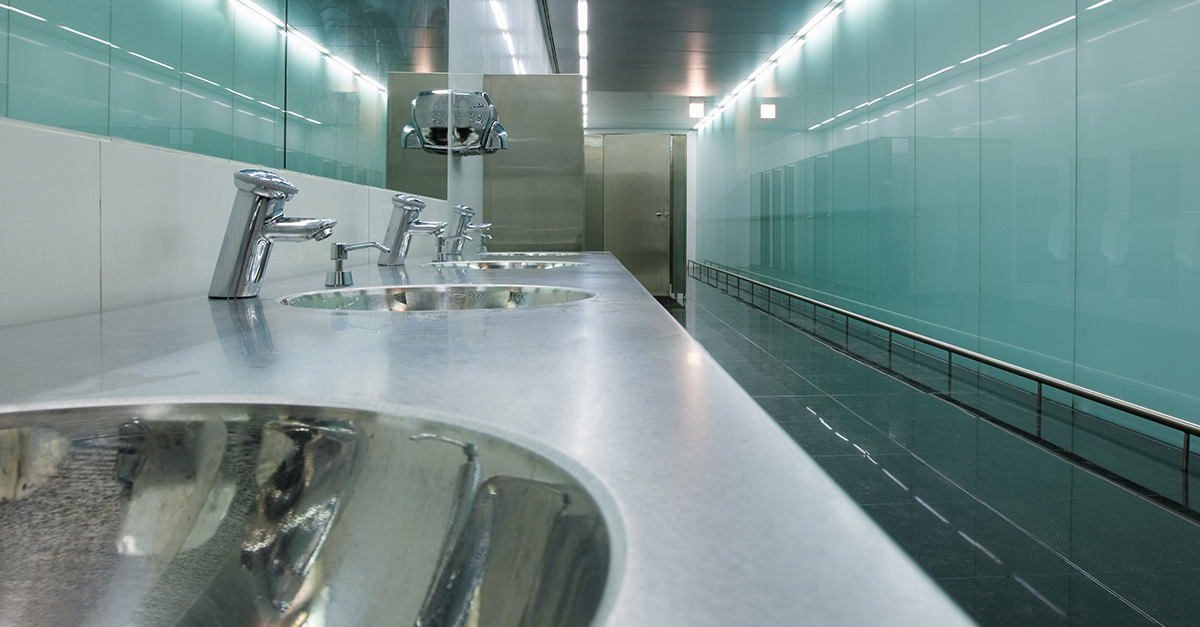As restrooms modernize for the future, expect to see a focus not only on sanitation and sustainability, but also on safety.
Safety First
Public restrooms can be the target of vandalism, loitering, and unlawful behavior, including drug sales. Loos of the future will discourage this behavior via virtual assistants.
No crowding: To ensure only one person uses the restroom at a time (excluding parents with children) users will hit a call button. A virtual assistant will see potential restroom users via an overhead camera and buzz them in.
Time’s up: The virtual assistant will give each user about 10 minutes to use the restroom. After about eight or nine minutes, the assistant notifies the users their time is up. Users can ask for a few more minutes if needed.
Everything OK in there? People have occasionally passed out or had heart attacks in public restrooms. If the virtual assistant detects no movement in the restroom for ten minutes, it will call police or paramedics to investigate.
You forgot something: The virtual assistant also notices if something has been left behind in the restroom. Very often, a user has simply forgotten something. But there is a possibility a user intentionally left behind a dangerous item. Post-use infra-red scanners look for packages left behind and notify administrators if they see anything suspicious.
Sustainability
The big sustainability focus in public restrooms of the future will be water efficiency. In most areas around the world, there are growing efforts to find ways to reduce water consumption. Expect faucets, toilets, and urinals to have flush controls. When working properly, these can reduce water consumption.
Only high-efficiency toilets, designed to use 1.25 gallons of water per flush or less, will be installed. These toilets can detect if a full flush or just a partial flush is needed. They do this by analyzing how much time someone has used the toilet.
California now requires that new urinal installations only use a half gallon of water per flush, which is half of the federal requirement. However, these urinals still need plumbing services. To help reduce costs, restrooms of the future will likely take advantage of no-water urinals that do not require special water plumbing.
Water is not the only sustainability feature of the restroom of the future—the use of soap and paper will also be reduced. For instance, a public restroom at a subway stop in Atlanta, GA, uses technology to dole out supplies. A hand placed to the left of the sink releases a measured amount of soap, hands placed in the center of the sink release water, and hands placed to the right of the sink release dry air. Paper towels are not available.
Placing hands over a scanner releases measured amounts of toilet paper. The dispensing units are built into the wall, so the toilet paper rolls cannot be removed. This feature also addresses a safety issue, since fires in public restrooms are not uncommon and are often started by vandals collecting rolls of toilet paper.
Cleaning
Graffiti removal is a major problem in cleaning public restrooms. Fortunately, coatings that turn walls into easy-to-wash chalkboards are now available. An all-purpose cleaner will easily remove the graffiti.
The Atlanta subway restroom has an auto-cleansing system that essentially hoses down the restroom walls, floors, and fixtures. But it is viewed as an interim cleaning method at best. As auto-cleansing systems are very water intensive, more traditional cleaning methods will likely be adopted to help address sustainability concerns.
The technologies mentioned here are all available now. The only thing holding back progress is cost. The Atlanta subway cost about $100,000 to construct. As more futuristic restrooms are installed, more ways to reduce these costs will likely be found.




